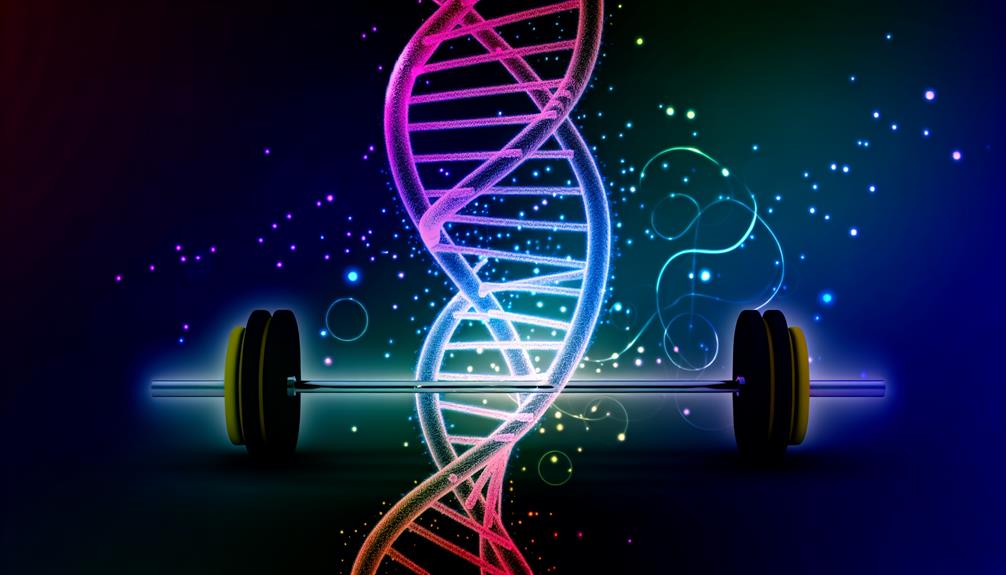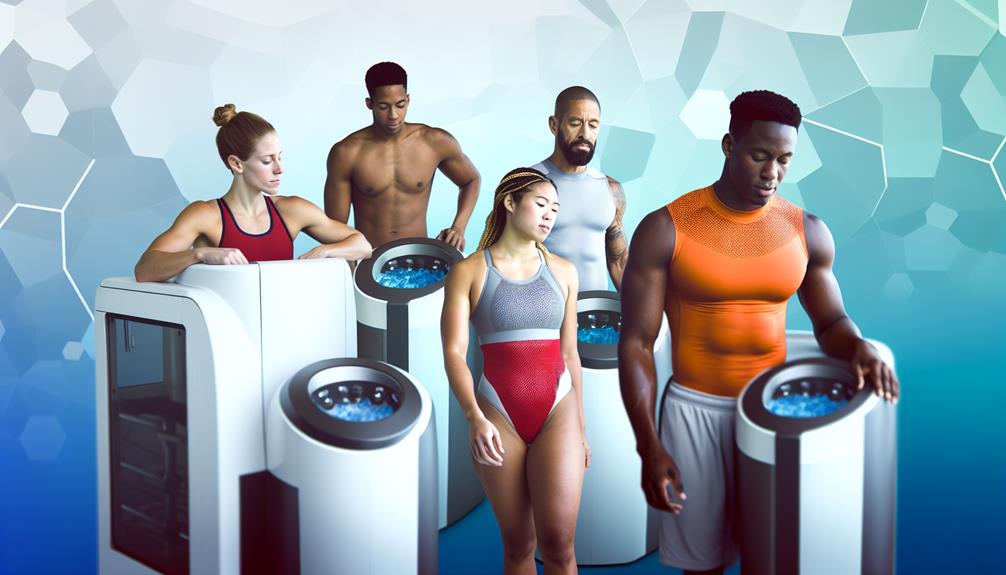Are you tired of the same old fitness routines that seem to yield minimal results? Well, prepare to have your mind blown as we unveil the latest research findings in the realm of fitness science. These groundbreaking advancements have the potential to revolutionize the way you approach your workouts and optimize your overall health. From the benefits of high-intensity interval training to the impact of nutrition on athletic performance, and even the role of genetics in fitness, there is a wealth of fascinating information to be discovered. But that’s not all – we’ll also explore the advances in wearable technology for fitness tracking and the emerging trends in recovery and rehabilitation techniques. Get ready to discover a whole new world of possibilities for achieving your fitness goals.
Key Takeaways
- High-Intensity Interval Training (HIIT) offers numerous benefits, including improved cardiovascular fitness, strength, endurance, and weight loss.
- Proper nutrition and hydration are crucial for optimal athletic performance, with carbohydrates, protein, and fats playing important roles.
- Genetics play a significant role in determining fitness level and potential, and personalized training programs based on genetic testing can enhance performance and prevent injuries.
- Wearable technology, such as fitness tracking devices, provides accurate data and empowers individuals to make informed decisions and track their progress.
Benefits of High-Intensity Interval Training
High-Intensity Interval Training (HIIT) offers numerous benefits for individuals seeking to maximize their fitness gains in a time-efficient manner. Interval training techniques involve alternating periods of high-intensity exercise with short rest or recovery periods. This type of training has been shown to significantly improve cardiovascular fitness, increase muscular strength and endurance, and enhance metabolic function.
One of the key advantages of HIIT is its ability to deliver substantial fitness improvements in a relatively short duration. Research suggests that as little as 15-20 minutes of HIIT performed three times per week can yield similar or even greater benefits compared to traditional moderate-intensity continuous training lasting 30-60 minutes. This optimal workout duration is particularly appealing for individuals with busy schedules who struggle to find time for exercise.
Moreover, HIIT has been shown to be highly effective for weight loss and fat reduction. Studies indicate that HIIT can increase post-exercise energy expenditure and fat oxidation, leading to greater calorie burn throughout the day. Additionally, HIIT has been found to preserve muscle mass while promoting fat loss, which is crucial for overall body composition improvement.
Impact of Nutrition on Athletic Performance
To optimize your athletic performance, understanding the impact of nutrition is crucial as it plays a significant role in fueling your body and enhancing your physical capabilities. Proper nutrition and hydration are essential for athletes as they directly affect energy levels, muscle function, and overall performance. Meeting your macronutrient needs, including carbohydrates, proteins, and fats, is vital for sustained energy during exercise. Carbohydrates are the primary source of fuel for your muscles and should make up the majority of your diet. Adequate protein intake is necessary for muscle repair and growth, while fats provide essential fatty acids and aid in hormone production. Additionally, maintaining proper hydration is crucial to prevent dehydration, which can impair performance and lead to fatigue and muscle cramps.
In addition to nutrition and hydration, ergogenic aids and supplements can also play a role in enhancing athletic performance. Ergogenic aids are substances or techniques that enhance an athlete’s performance, and they include legal substances such as caffeine, creatine, and beta-alanine. These substances have been shown to improve endurance, strength, and power output. However, it is important to note that not all ergogenic aids are safe or effective, and it is essential to consult with a healthcare professional before using any supplements.
The Role of Genetics in Fitness

Genetics plays a significant role in determining an individual’s fitness level and potential for athletic performance. With advancements in fitness science, the role of genetics in fitness has become increasingly apparent. Genetic testing has emerged as a valuable tool in understanding an individual’s genetic makeup and how it influences their fitness capabilities. By analyzing specific genes associated with muscle development, oxygen utilization, and metabolism, genetic testing can provide valuable insights into an individual’s athletic potential.
Personalized training programs based on genetic testing results have gained popularity among athletes and fitness enthusiasts. These programs take into account an individual’s genetic predispositions and tailor exercise routines and nutrition plans accordingly. For example, someone with a genetic variant associated with fast-twitch muscle fibers may benefit from power-based training, while someone with a variant linked to endurance may excel in aerobic activities.
Studies have shown that individuals who follow personalized training programs based on genetic testing experience greater improvements in their fitness levels compared to those following generic training plans. By optimizing training and nutrition according to an individual’s genetic profile, personalized programs can enhance performance, prevent injuries, and improve overall fitness outcomes.
Advances in Wearable Technology for Fitness Tracking
What are the latest advancements in wearable technology for fitness tracking and how are they revolutionizing the way we monitor and optimize our physical activity? Wearable technology innovation has greatly improved the accuracy and effectiveness of fitness tracking devices, enabling individuals to gain valuable insights into their physical performance. Recent advancements in wearable technology have introduced features such as heart rate monitoring, sleep tracking, and GPS tracking, all of which contribute to a more comprehensive analysis of one’s fitness journey.
One notable innovation in wearable technology is the integration of advanced sensors that enable accurate heart rate monitoring. This feature allows users to track their heart rate in real-time during exercise, providing valuable information about their cardiovascular health and exertion levels. Moreover, sleep tracking capabilities have been enhanced, enabling individuals to monitor and analyze their sleep patterns and quality, ultimately contributing to overall well-being and performance.
GPS tracking is another groundbreaking development in wearable technology for fitness tracking. GPS-enabled devices provide accurate data on distance covered, speed, and elevation, allowing users to accurately track their outdoor activities such as running, cycling, or hiking. This feature not only provides real-time feedback on performance but also enables individuals to set and achieve specific goals based on their location and terrain.
The advancements in wearable technology for fitness tracking have revolutionized the way we monitor and optimize physical activity. With improved accuracy and a wealth of data, individuals can make informed decisions to enhance their training routines, set realistic goals, and track their progress. These innovations have undoubtedly empowered individuals to take control of their fitness journey and optimize their physical performance.
Emerging Trends in Recovery and Rehabilitation Techniques

Emerging trends in recovery and rehabilitation techniques are revolutionizing the way individuals optimize their physical recovery and regain functionality after injury or intense physical activity. With advancements in fitness science, new recovery methods and rehabilitation innovations have emerged, providing individuals with more effective and efficient ways to recover and rehabilitate.
One of the emerging trends in recovery methods is the use of cryotherapy. Cryotherapy involves exposing the body to extremely cold temperatures for a short period of time, which has been shown to reduce inflammation, decrease pain, and accelerate the healing process. This technique is gaining popularity among athletes and individuals recovering from injuries due to its quick and effective results.
Another innovative approach in rehabilitation techniques is the use of virtual reality (VR) therapy. VR therapy allows individuals to engage in simulated environments and activities, which can aid in the recovery process by improving motor function, balance, and coordination. Studies have shown that VR therapy can significantly enhance rehabilitation outcomes, making it a promising tool in the field of physical recovery.
Furthermore, there has been a growing interest in the use of regenerative medicine in recovery and rehabilitation. This approach involves using stem cells, platelet-rich plasma, and other biological agents to promote tissue repair and regeneration. Regenerative medicine has shown promising results in accelerating the healing process and improving functional outcomes.
Frequently Asked Questions
What Are Some Specific High-Intensity Interval Training Exercises That Can Be Incorporated Into a Workout Routine?
Incorporate high-intensity interval training exercises into your workout routine to maximize results. Specific exercises like sprints, burpees, and kettlebell swings can help improve cardiovascular endurance and promote fat burning.
How Does Nutrition Affect Athletic Performance in Different Sports or Activities?
Nutrition plays a crucial role in athletic performance across various sports and activities. Personalized nutrition plans can optimize energy levels, enhance recovery, and support muscle growth. Research shows that fueling your body with the right nutrients can significantly improve your athletic abilities.
Can Genetics Determine an Individual’s Potential for Athletic Success?
Genetic testing can provide insights into an individual’s potential for athletic success. By analyzing specific genes related to physical traits and performance, scientists can make performance predictions based on the data collected.
What Are Some of the Latest Advancements in Wearable Technology for Fitness Tracking?
Wearable technology advancements in fitness tracking have revolutionized how we monitor and analyze our physical activity. From heart rate monitoring to sleep tracking, these innovations provide valuable data for optimizing our fitness routines.
Are There Any Unique or Innovative Recovery and Rehabilitation Techniques That Are Gaining Popularity in the Fitness Industry?
There’s a surge in popularity for unique recovery and rehabilitation techniques in the fitness industry. Innovations like cryotherapy, compression therapy, and foam rolling are being embraced for their potential benefits in enhancing recovery and improving performance.
Conclusion
In conclusion, the advancements in fitness science have revolutionized the way we approach athletic training. High-intensity interval training has proven to be a game-changer, offering unparalleled benefits for improving cardiovascular fitness and burning fat. Coupled with a well-balanced nutrition plan, athletes can optimize their performance and achieve their goals. Furthermore, the role of genetics in fitness cannot be overlooked, as it provides valuable insights into individual capabilities and limitations. With the integration of wearable technology and emerging recovery techniques, the future of fitness looks promising, pushing boundaries like never before.













